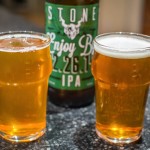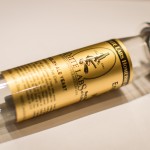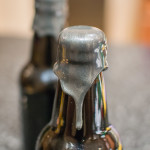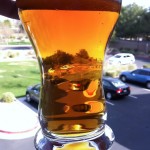Homebrew Competition Tips

Let’s face it, while we enter competitions for a source of objective feedback about our beers, deep down, we want to win. Isn’t that why they’re called competitions? The simple answer is brew the best beer you can that fits the style you plan to enter, but that’s easier said then done. Here are some tips that will help your beers place more often.
Clean Fermentation:
This is the most general tip, but also the most important. It’s really hard to score well in competitions with beers that weren’t fermented clean. Pitch the proper amount of yeast, whether dry or liquid, and control the temperature you ferment at. The amount of yeast and temperature will vary from beer to beer, but there are some excellent yeast pitch rate calculators out there. More often than not, this alone will put your beer ahead of the pack in the flight.
Number of Entries:
Enter more beers. It sounds really simple, but if you’re really trying to take home a ribbon, it’s one of the best methods. Judging in competitions is so variable, and relies quite a bit on luck. Where your beer was placed in the flight, the quality of the other entries, what the judges ate for breakfast, which way the wind blows, etc can all have an effect on how your beers are judged. Entering more beers into the comp will help even out the highs and lows, and give you a much better chance at placing.
Follow the Style Guidelines (Sort of):
Beers in BJCP Competitions are judged based on how accurately they exemplify the style. The judges will be reading the style sheet over and over as they taste beers throughout the flight. Most people try to shoot for the middle of the style, but the trick here is, you can often pull some really high scores by brewing your beer a little over the top. Judges are presented with one beer after another in a flight, and they often develop palette fatigue. If your pale ale is near the end of the flight, and the hop aroma and bitterness are a little over the top for a pale ale, it will stand out from the crowd and often score really well. Obviously this technique will backfire if you beer is very first in the flight, but I like to play the odds.
Bottling:
If you bottle your beer rather than keg, using some method to reduce the amount of yeast in the bottle is a good idea. Cold crash your primary if you can, or consider a secondary. You’re aiming for only a thin layer of yeast at the bottom of your bottles. If there’s a half inch of yeast at the bottom, that’s most likely going to be stirred back up, and your beer won’t taste as well as you intended. Oxygen pickup at bottling is less of a concern since there will be fermentation in the bottle.
If you keg your beer, and bottle out of the keg, you’ll need more caution. Use a method to fill your bottles that fills them from the bottom. If you can gas your bottles with Co2 prior, even better. It’s easier than most people think to oxidize finished beer, and this will be more evident if the competition date is a ways in the future. There won’t be any fermentation in the bottle, so cleanliness and sanitation are even more important. Most homebrews don’t know how well their beer travels, and they’ve never tasted their beer after it’s sat on a hot UPS truck for a week. So the more meticulous you can be, the better.
Freshness:
Following the last point: Freshness. Styles that are best fresh (Wits, wheats, hefes, hoppy styles), should be stored cold prior to the competition. If the comp organizer doesn’t specifically state that they will be storing bottles cold, assume they won’t be. Keep your bottles in your fridge, and drop them off or ship them as near to the deadline as you can. As soon as your bottles leave your hands, you have no control over them, so control what you can.
First Impressions:
Appearance and carbonation only account for a few points on the score sheet, but they have a much greater effect on the judges perception of your beer. If the bottle is a gusher, their mind will instantly jump to injected. If the bottle is flat, the flavors in the beer will be subdued. If the beer is murky, and the style calls for brilliant clarity, the judge won’t be as excited to try that first sip. First impressions go a long way. A properly carbonated, brilliantly clear beer makes a great first impression on the judge. They’ll have that in their mind as they evaluate your beer, and you will score higher even if there are some slight flaws in other areas.
Results:
With all this talk about try to place well, it’s very important to take the scores you receive with a grain of salt. Lots of things can influence the scores your beer receives, and one competition isn’t always an accurate representation of the quality of your beer. Before you think your beer is the best on earth, or the worst, enter the same beer in a couple more competitions so you can establish a trend. I’ve had the same beer score a 41 and a 28 in two different competitions; personally I felt it warrented a score around 35.
Lastly, don’t be upset if your beer doesn’t score as well as you hoped. Competitions first and foremost should be fun, and are an excellent source of objective feedback. Crack open a bottle of your beer as you read the judges notes. This will go a long way towards helping you evaluate your beer, find flaws, and improve your technique and your product. And isn’t that what the point of all this is, better beer?




Good Writeup, I have been disappointed with my competition results lately this is a nice boost.